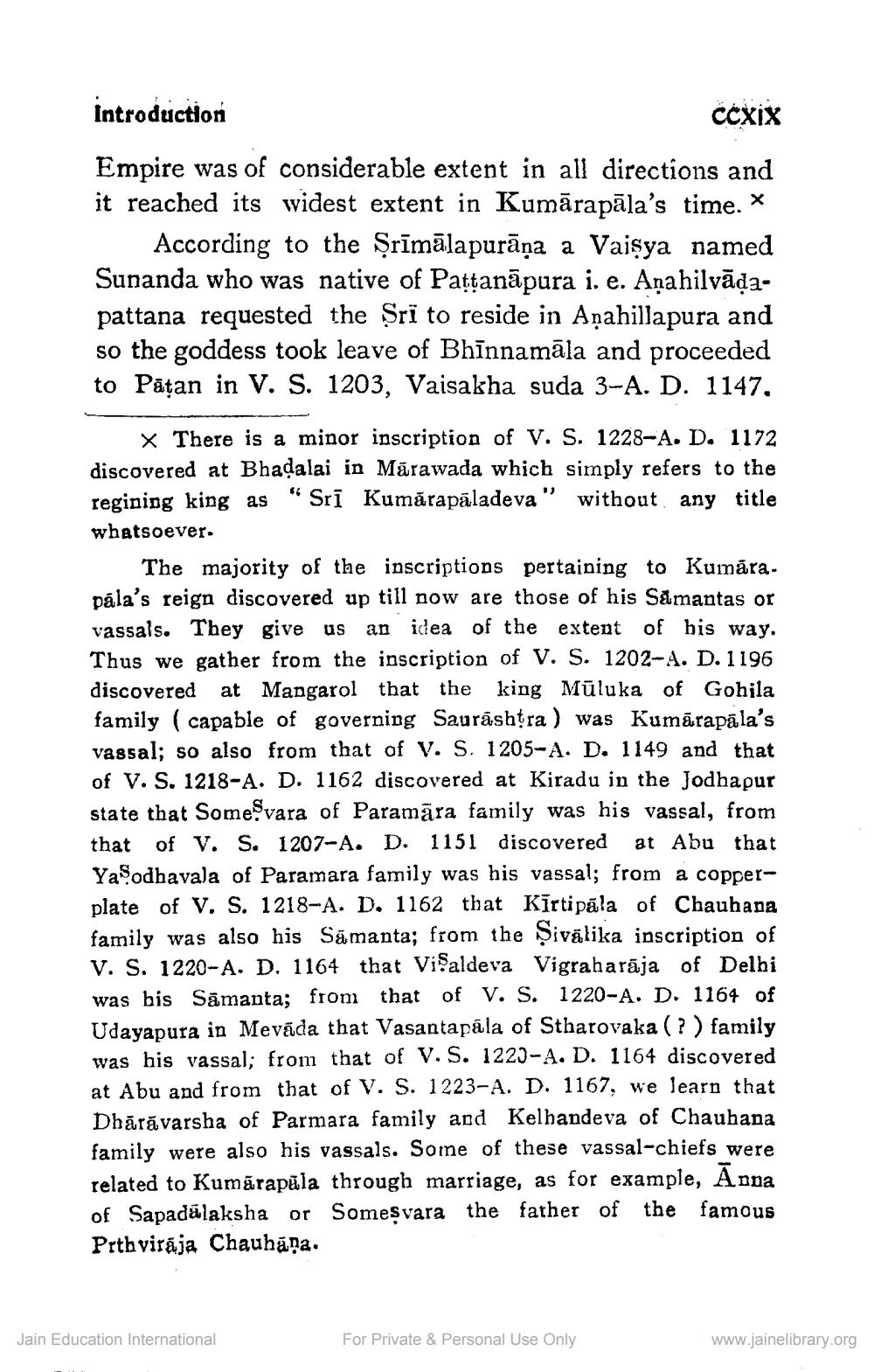________________
Introduction
CCXIX Empire was of considerable extent in all directions and it reached its widest extent in Kumārapāla's time. *
According to the Șrīmālapurāņa a Vaişya named Sunanda who was native of Pattanāpura i. e. Anahilvāờapattana requested the Sri to reside in Aşahillapura and so the goddess took leave of Bhīnnamāla and proceeded to Pāțan in V. S. 1203, Vaisakha suda 3-A. D. 1147,
* There is a minor inscription of V. S. 1228-A. D. 1172 discovered at Bhadalai in Mārawada which simply refers to the regining king as “ Srī Kumārapāladeva" without any title whatsoever.
The majority of the inscriptions pertaining to Kumára. pāla's reign discovered up till now are those of his Samantas or vassals. They give us an idea of the extent of his way. Thus we gather from the inscription of V. S. 1202-A. D. 1196 discovered at Mangarol that the king Mūluka of Gohila family ( capable of governing Saurashtra ) was Kumārapāla's vassal; so also from that of V. S. 1205-A. D. 1149 and that of V. S. 1218-A. D. 1162 discovered at Kiradu in the Jodhapur state that some vara of Paramāra family was his vassal, from that of V. S. 1207-A. D. 1151 discovered at Abu that Ya odbavala of Paramara family was his vassal; from a copperplate of V. S. 1218-A. D. 1162 that Kīrtipāla of Chauhana family was also his Sämanta; from the Sivälika inscription of V. S. 1220-A. D. 1164 that ViSaldeva Vigraharāja of Delhi was bis Sāmanta; from that of V. S. 1220-A. D. 1164 of Udayapura in Mevāda that Vasantapála of Stharovaka(?) family was his vassal; from that of V. S. 1223-A. D. 1164 discovered at Abu and from that of V. S. 1223-A. D. 1167, we learn that Dhārāvarsha of Parmara family and Kelhandeva of Chauhana family were also his vassals. Some of these vassal-chiefs were related to Kumārapāla through marriage, as for example, Anda of Sapadālaksha or Someşvara the father of the famous Prthviraja Chauhana.
Jain Education International
For Private & Personal Use Only
www.jainelibrary.org




